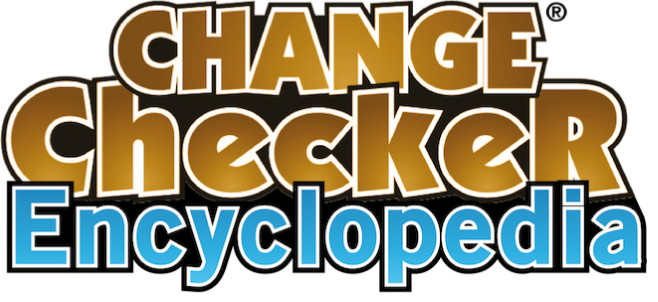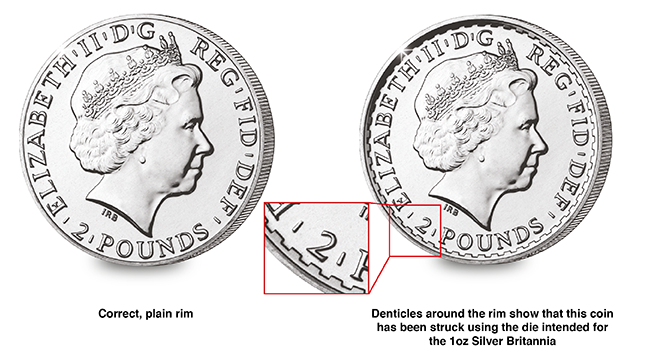Posts Tagged ‘Coin collection’
STOP: the five £1 coins you must NOT cash in!
*** 2020 UPDATE ***
Three years since the old round pound coins were demonetised and replaced by the 12 sided £1, it’s been revealed that 122 million of these old coins still have not been returned to The Royal Mint.
Roughly 1.58 billion have found their way back to the Mint, but in addition to this, there have been at least 1.5 billion counterfeit round pounds handed in.
The Royal Mint said these fakes “could not be readily distinguished from the genuine coin, which is why a new coin was introduced”.
But, of the 122 million genuine round pounds still in circulation, which ones should you be looking out for?
In 2017, the Round £1 coins were demonetised and replaced by the new 12 sided coins we see today. The public were encouraged to spend or return their coins to the banks, but did you know that not all of these coins made it back to The Royal Mint?
Whilst these old coins are no longer legal tender, they can still be returned to the bank and deposited into you account, however there’s a few coins you definitely shouldn’t be cashing in if you’re lucky enough to find one (tip: try looking down the back of the sofa, in coat pockets or old supermarket bags for those lost and forgotten coins!).
Here are the ones to look out for:
Scotland: Edinburgh City

The Edinburgh City £1 Coin
The Edinburgh City £1 coin was released in 2011 with a mintage of just 935,000, making it the lowest Round Pound by 680,000!
Taking this into account, there’s no real surprise that this coin sits top of our Scarcity Index with a perfect score of 100.
Such is the rarity, only 17% of Change Checker users list having this coin in their collection.
This coin currently sells for between £7-£12.
Wales: Cardiff City

The Cardiff City £1 Coin
Another of the capital cities series, the Cardiff City £1 coin is definitely one to keep.
Released in 2011, this coin has a mintage of just 1,615,000 and is in 2nd position in our Scarcity Index with a very high score of 88.
This coin depicts the circular Coat of Arms of Cardiff as the principal focus to represent Wales.
This coin is worth between £3-£5.
England: London City

The London City £1 Coin
The 3rd coin from the capital cities series that you should hold on to is the London City £1 coin. Interestingly, the Belfast City coin does not make our list.
Released in 2010, this coin has a mintage of 2,635,000, much higher than Edinburgh and Cardiff but low in comparison to other £1 coins.
London City scores an impressive 77/100 in our Scarcity Index.
This coin can sell for between £3-£6.
Scotland: Thistle and Bluebell

Scotland: Thistle and Bluebell £1 coin
The Thistle and Bluebell £1 coin was released in 2014 as part of the floral emblems series.
It has a mintage figure of 5,185,000 and scores a 55 on our Scarcity Index, coming in 4th place.
This coin features a thistle alongside a bluebell to represent Scotland.
This is worth between £2-£5.
UK: Crowned Shield

UK: Crowned Shield £1 coin
The UK Crowned Shield £1 coin was released way back in 1988, only 5 years after the Round £1 came into circulation.
Although it has a relatively low mintage figure of 7,118,825, this coin makes the list due to some interesting Change Checker App data.
It scores a 51 in our Scarcity Index but less than 1/4 of Change Checker users list having this coin in their collection and swap requests outnumber swap listings by 6 to 1!
This coin will sell for between £3-£7.50.
It’s worth noting that our valuations are based on coins that have recently sold on auction sites. The value of a coin depends on a number of factors including the coin’s condition.
Own the 2017 Round £1 Collecting Pack
Secure your exclusive £1 Collector Pack today which includes Britain’s last round pound as well as an original £1 Banknote. Click here to order yours >>
Or take a look at the old round £1 coins and complete your collection here >>
Coin Photo of the Year- Sport voting!
The Change Checker Coin Photo of the Year 2017 competition is now in its final week and the entries are better than ever.
The third category was ‘Sport’, which proved to be very popular, and we’ve selected our favourite 4 photos. It’s now over to you to decide which photo will go through to the final to be in with a chance of becoming Coin Photo of the Year 2017.
Take a look at the photos below and vote for your favourite in the poll at the bottom of the page:

Commonwealth Games

Dart Board

Gold and Silver Medal

On yer bike!
Change Checker Encyclopedia – Coin terminology made easy!
 The thing we love about coin collecting is that anybody can do it…but, we’re aware that to those who are not seasoned collectors, some of the terminology can be a bit daunting. So we decided to draw up a go-to terminology list, the Change Checker Encyclopedia, to ensure you never confuse your ‘base metal’ from your ‘bi-metallic’ again!
The thing we love about coin collecting is that anybody can do it…but, we’re aware that to those who are not seasoned collectors, some of the terminology can be a bit daunting. So we decided to draw up a go-to terminology list, the Change Checker Encyclopedia, to ensure you never confuse your ‘base metal’ from your ‘bi-metallic’ again!
Face Value
The face value of coins is usually its legal value. However, their market value usually doesn’t bear any relationship to the face value as collectors pay close attention to the coin’s metal content, finish and rarity.
Obverse
This is the side of the coin which features the monarch’s head- hence “Heads”
Reverse
This is the opposite side of the coin to the monarch’s head and commonly referred to as “tails”. This will usually feature an emblem or another design.
Circulated
These are the coins that you find in your change. As they’ve been circulated among the population they’re likely to show some wear and tear.
Uncirculated
A coin in a new condition fresh from the Mint originally intended for circulation but not circulated. Usually they have some small scratches and marks.
Brilliant Uncirculated
These coins are struck to a superior finish and don’t have the scratched or blemishes you’ll find on the coins in your change.
Proof
‘Proof’ refers to the finish of a coin and is often a favourite amongst collectors. Proof coins are struck several times with special highly polished dies and usually have a mirror lustre finish, with frosted relief.
Blank
This is a disc-shaped piece of metal onto which a coin image is struck or pressed
Base Metal
This is a common and inexpensive metal, usually either Cupro-Nickel or Nickel Brass, used to produced coins for circulation.
Milled Coin
This is any coin that has been struck in a coining press.
Die
This is a block of hardened metal that has a design or effigy engraved on to it. It is used to impress the design onto a coin blank.
Strike
This is the final stage of the coin making process where an image is pressed (using huge force created by two dies) onto both sides of a coin blank.
Bi-Metallic
A coin made from the combination of 2 metals or alloys, our £2 and the new 12-sided £1 coin are good examples.
Mis-Strike
The striking process is never fully exempt from human error and sometimes a coin can become mis-aligned during the striking process, making it a mis-strike.
Error
Genuine errors, such as the undated 20p and ‘silver’ 2p are extremely rare. If you think you’ve found one you can send an image to [email protected] and we would be happy to take a look.
Mule
A mule coin is struck with an obverse and reverse that is not meant to be paired, such as this 2014 ‘Year of the Horse’ coin.
The wrong obverse (Queen’s head) die was selected when the coin was struck, leaving just 17,000 of the several hundred thousand mintage with the incorrect finish around the edge of the coin. No-one noticed until it was too late and the coins had already been released to bullion dealers.

Mintage Figures
Simply speaking the mintage figure is the total quantity of a specific coin that has been struck. This can be higher than the ‘edition limit’ depending on how the coin is offered. Mintage figures are only one of the guides to the collectability of coins as over time coins will be withdrawn from circulation due to damage, they may get lost or be retained by collectors.
Mint
This refers to any organisation authorised to strike coins and medals. The British Royal Mint is one of the oldest and most respected in the world dating back to the 7th century.










